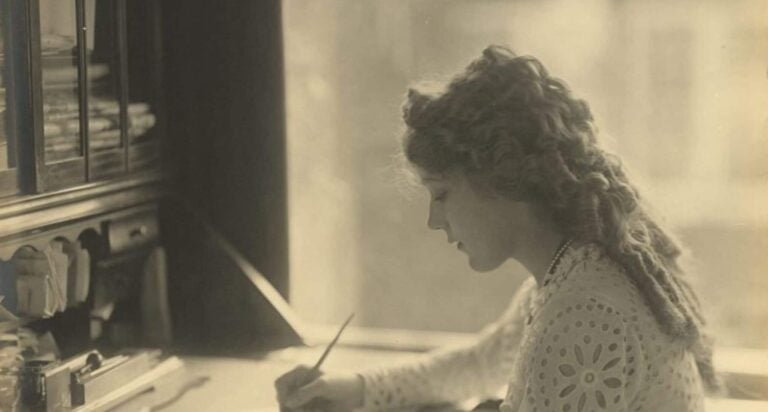When all we want to do is find our forefathers, and fill in the gaps in our household tree, taking the time to document our sources can appear like an extra, laborious task– one that is definitely not as enjoyable as doing the research study itself. If we want to produce a tree that has real value now and in the future, mentioning sources is not optional.
Why and How to Cite Sources in Your Family Tree

What is “Citing a Source”
When we research on our forefathers and find brand-new information, these details come from a source. This source– such as a document, a book, a newspaper, or a census record– is accountable for providing the details we are contributing to our ancestral tree and it is important that we record it when we include these brand-new truths.
Recording a source is called citing and there are numerous methods to do this. Many modern research platforms make it easy, such as MyHeritage or Ancestry, by developing citations for us when we include a fact to a person in our tree from their databases. There are lots of times when we dig up details from external sites and repositories and we must do this citing ourselves.
Why Cite Your Sources
Learning about our ancestors can be a great deal of enjoyable. And, when we find brand-new details about someone our very first impulse is to include it to our family tree and keep moving so we do not break our momentum. At this phase it can be tempting to not bother to make note of where the information came from.
Perhaps we assume that we will keep in mind, or that others will have the ability to discover the record simply as we did, but this kind of thinking leads to a family tree that has little long-term worth– and one that will be questioned by every researcher who sees it in the future.
There are actually thousands of unsourced trees on the web and, while they can be enjoyable to browse, they are mainly useless to a scientist looking for accurate data. All truths are suspect if they don’t have a source, as we have no way of understanding if the individual who added that fact actually KNEW that detail was proper or if they simply THOUGHT it was.
Don’t be responsible for one of these trees. If you are going to invest time in research study it is beneficial to invest some extra time producing a tree that individuals will be able to regard and referral in the future. Citing all of your sources makes sure that you and others will have the ability to easily examine the records your data came and, as new information emerge about your household, revisit them in a new context.
How to Cite a Source
While there are numerous methods to develop citations, it does not have to be made complex. In its most basic type a source ought to include some really basic components. In this guide we have actually showcased a combined down approach for those who do not have the time or inclination to learn more about more sophisticated citations, and after that we have dived deeper into the process.
For those brief on time, below is the absolute simplest way to point out a source. It is not standard, or ideal, but is much better than no citation at all. As mentioned, many large websites like Ancestry develop citations for you if you add a record from their database, but you will need to add this info yourself any time you add realities from external sources.
If you discover a record and add details to your tree from that record, just attach the scanned record or a screenshot of the index, and then add, a minimum of, the following information. You will see an area for this in your tree program. Make certain the file and citation are attached to the reality you are adding, such as a birth date or burial area or, if that is not possible, the person.
Let’s presume that you took out an area for your forefather in 1940 from the 1940 United States census, or that you have actually found a burial date in a published collection of burials developed by a reputable source. Here is what to add to your tree with these records.
Add the Author of the Collection Your Fact Came From– example: US Census Bureau or Adams County Historical Society
Include the Collection Name– example: 1940 United States Census or Adams County Residents 1870-1890
Show Where in the Collection Your Ancestor Can Be Found– example: Page 18b or Page 98
Include the Location Where You Found the Collection– example: Ancestry.com or Adam’s County Historical Society, Jamesville, Nebraska
Include a Direct URL or Call Numbers for a Physical Collection– example: https://search.ancestry.com/cgi-bin/sse.dll?indiv=1&dbid=2442&h=130261113&tid=&pid=&usePUB=true or QE534.2.
Discuss the Date you Accessed the Collection– example: 12 July 2020 or 19 May 2000.
The above sample citations would look like the following:.
United States Census Bureau. 1940 United States Census. Page 18b. Ancestry.com. https://search.ancestry.com/cgi-bin/sse.dll?indiv=1&dbid=2442&h=130261113&tid=&pid=&usePUB=true. Accessed 12 July 2020.
or.
Adams County Historical Society. Adam’s County Residents 1870-1890. Adam’s County Historical Society.
In many citations, as above, the author is noted initially. However, for clarity, it makes good sense to note the collection title initially in some cases as we have done below.
The requirement for dates in household history research is dd, mmm, yyyy. Suggesting that noting the 2 digit day, followed by the month (or three letter abbreviation for the month) and then the complete year is chosen. Since various date formats are utilized throughout the world (and at various points in history) this method assists to prevent confusion.
To assist much better understand why this is important, consider that 07/12/2020 could be July 12th or December 7th depending upon how it reads. By placing and reading dates in the standard format, and consisting of the month’s name, we can guarantee clear communication of our dates to other researchers.
The following format is a more involved version of the citation format above, and consists of a bargain more information. It is closer to a standard and complete citation.
Here is a more in-depth option:.
The title of the particular collection– Sixteenth Census of the United States.
Who created it (the initial author)– United States of America, Bureau of the Census.
The date the source file was developed (if known)– 1940.
The initial repository and collection details (if one exists)– National Archives and Records Administration, Washington, D.C. T627, 4,643 rolls.
The location in the collection where the file exists, with detail– Census Place: Palatka, Putnam, Florida; Roll: m-t0627-00615; Page: 18B; Enumeration District: 54-5.
The place where it is hosted online– Ancestry.com.
A URL for the specific document, if online, or call numbers in a repository– https://search.ancestry.com/cgi-bin/sse.dll?indiv=1&dbid=2442&h=130261113&tid=&pid=&usePUB=true.
The date it was accessed by you– 12 July 2020.
Notes, if needed, for clarification– Mary Sanders is noted as Mary Jones in this census since she was quickly wed to a guy named Ned Jones from 1937 to 1941.
Written out in your records, such a citation would look something like this:.
United States of America, Bureau of the Census. Census Place: Palatka, Putnam, Florida; Roll: m-t0627-00615; Page: 18B; Enumeration District: 54-5. Date accessed 12 July 2020.
Italics, quote marks and semicolons can be utilized for clarity and to suit standard citation design guides, but are not essential and can be difficult to bear in mind. We will attend to these a bit later on in the short article.
Clearly, this details will look a fair bit different if your source is not an online record. Offline records, books, individuals and so on will need various info to be gone into.
For basic help finding out how to structure citations by type please read Family Search’s guide to citations here, which includes aid for offline and online sources. You may likewise wish to check out the gold standard referral on citations and proof, Evidence Explained by Elizabeth Shown Mills for more detailed help.
Special note: Do not link text with a URL to your source even if allowed in some programs. Although it might work well at the time, links can be eliminated when copying from program to program. Always include the direct URL in text format as seen above.
Keep in mind, some paperwork is better than none– so don’t avoid citations since they feel too complex!
More Help for Citing Your Sources– Non-layered and Layered Citations.
As you write citations, you can mentally put them into one of 2 groups, non-layered and layered. If the artifact you utilize as your source remains in its initial kind (an original file you have viewed in person or own), it can be composed in a non-layered citation.
If, however, the original was digitized and is now an image on a screen (such as in an online database), a layered citation is needed. That holds true for any copy of the initial, including microfilm.
Non-layered citations ought to include the creator, title, type, date and place of publication, and physical place of the artifact. Include the topic of the artifact and date if there is one.
Layered citations need to consist of initially, the copy’s developer, title, type, date (ie: date the website was developed or upgraded) and location of publication, and physical area (ie: the website url or microfilm repository) of the copy and the date you accessed the copy online; and 2nd, everything you would include from a non-layered citation concerning the initial.
Break the layers with a semicolon. It is important to keep in mind that layered citations will consist of all details about the original and all details about the image or copy. Don’t forget to include your subject and date once again.
While specialists needs to follow really cautious treatments, even hobbyists must consist of source citations that offer readers the name, date and area of our sources. In this short article we have provided a variety of ways to do this and you can choose to utilize what fits you the very best.
Simply remember that picking not to source your tree will have enduring, unfavorable effect on your research study and will make it extremely hard for future generations to get value from your work. Choose a technique you feel comfortable with, and will have the time and energy to finish, and make it a part of your research regimen. You won’t be sorry.
For more aid with supplying proof for your research please read Can Your Family Tree Pass the 5 Step Proof Test?, which discusses the Genealogy Proof Standard and how to utilize it to enhance your research. You might also like to read Another Person’s Family Tree is Not a Valid Source. Household History Daily courses likewise offer detailed assistance on citing sources.

Leave a Reply